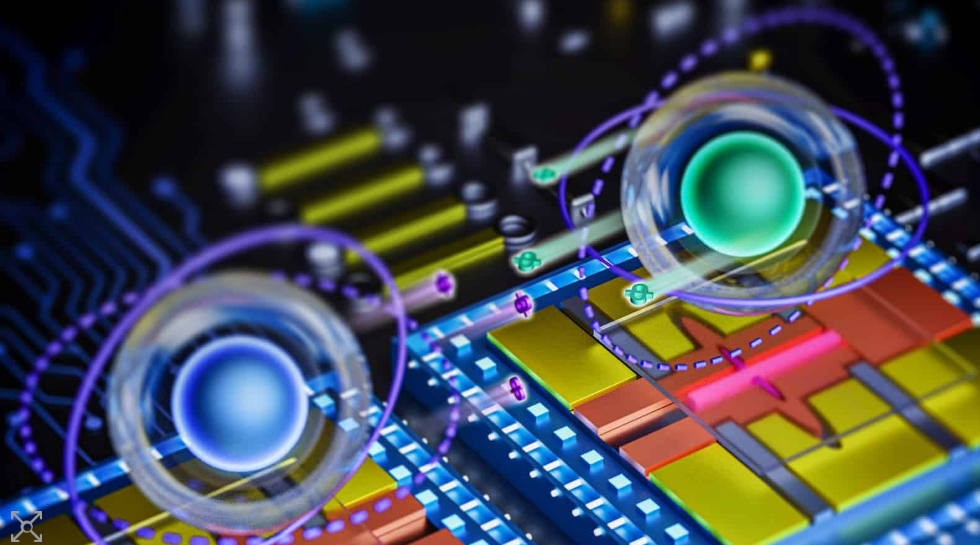Insider Brief
- U.S. researchers led by Dafei Jin from the Argonne Center for Nanoscale Materials and David Schuster from Stanford University and the University of Chicago. have significantly improved the coherence time of charge quantum bits (qubits) by a factor of 1000 and achieved a high fidelity of 98.1% in reading out the state of these qubits.
- This advancement is attributed to improvements in the materials used to construct the qubits, including trapping an electron within a quantum dot on a solid neon surface in a vacuum.
- Charge qubits, which represent quantum information through the presence or absence of excess charge on an electron, offer advantages over spin qubits, including faster operation speeds and easier fabrication due to their strong coupling with electric fields and these qubits are relatively new, with the first one created in 2022.
UNIVERSITY RESEARCH NEWS — December 4, 2023 — Researchers in the US have improved the coherence time of charge quantum bits (qubits) by a factor of 1000 thanks to advances in the materials used to construct them. Led by Dafei Jin of the Argonne Center for Nanoscale Materials and David Schuster of Stanford University and the University of Chicago, the multi-institutional team also showed it was possible to read out the state of these qubits with a fidelity of 98.1% — a value Jin says will increase further with the aid of more sophisticated readout technologies.
Coherence time is vitally important within quantum computing, as it denotes how long a qubit can remain in a superposition of multiple states before environmental noise causes it to decohere, or lose its quantum nature. During this period, a quantum computer can perform complex computations that classical computers cannot.
Many quantum systems can act as qubits. Spin qubits, for example, encode quantum information in the spin of an electron or nucleus, which can be up, down or a superposition of the two. Charge qubits, for their part, represent quantum information through the presence or absence of excess charge on an electron contained within the qubit system. They are relatively new — members of the team created the first in 2022 — and Jin says they have several advantages over spin qubits.

“Charge qubits typically permit much faster operation speed because charges couple strongly with electric fields,” he explains. “This is advantageous over spin qubits because spins couple weakly with magnetic fields. Charge qubit devices are generally much easier to fabricate and operate, because most existing fabrication and operation infrastructures are based on charges and electric fields, rather than spins and magnetic fields. They can often be made more compact.”
Ultraclean is ultraquiet
Jin explains that the researchers created their charge qubits by trapping an electron within a quantum dot, which is a nanoscale collection of atoms that behaves like a single quantum particle. The quantum dot rests on a surface made from solid neon and is placed in a vacuum.
According to Jin, this ultraclean environment is key to the experiment’s success. Neon, as a noble gas, will not form chemical bonds with other elements. In fact, as the team point out in a Nature Physics paper on the research, neon in a low-temperature and near-vacuum environment will condense into an ultrapure semi-quantum solid devoid of anything that could introduce noise into the qubit. This lack of noise enabled the team to boost the coherence time of the charge qubit from the 100 nanoseconds typical of previous efforts to 100 microseconds.
What is more, the researchers read out the state of these qubits with 98.1% fidelity without using a quantum-limited amplifier, which Jin describes as “a special device placed at very low temperature (in our case 10 millikelvin) that can amplify weak electromagnetic signals but bring in nearly zero thermal noise”. Because such devices enhance readout ability, obtaining 98.1% fidelity without them is, Jin says, especially impressive. “In our future experiments, once we use them, our readout fidelity can only go much higher,” he adds.
The next milestone
While a thousand-fold increase in coherence time is already a major improvement over previous charge qubit systems, the researchers expect even more in the future. According to Jin, the team’s theoretical calculations suggests that the charge qubit system could reach a coherence time of 1–10 milliseconds, representing another factor of 10–100 improvement over current values. To realize this, though, scientists will need to gain better control over every aspect of the experiment, from device design and fabrication to qubit control.
Beyond that, Jin and colleagues continue to look for ways to improve the system even further.
“The biggest milestone next is to show two charge qubits can be entangled together,” Jin says. “We have been working on that and have had a lot of progress. Once we accomplish that, our qubit platform is then ready for universal quantum computing, even though some detailed performance can keep being improved.”
Featured image: Keeping quantum: Artist’s rendering of two charge qubits with a long coherence time and strong coupling. Credit: Dafei Jin/Argonne National Laboratory and the University of Notre Dame)
For more market insights, check out our latest quantum computing news here.


















